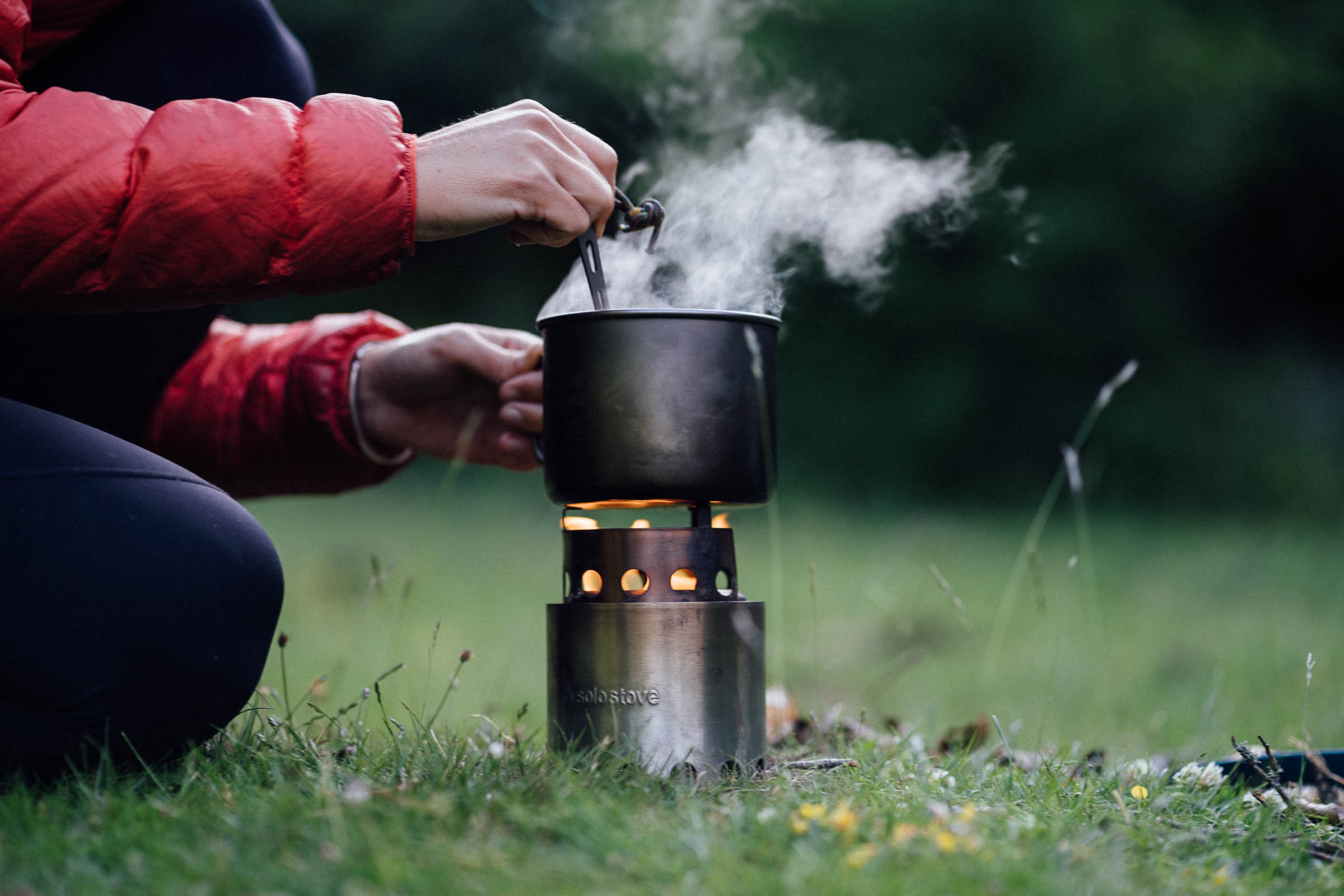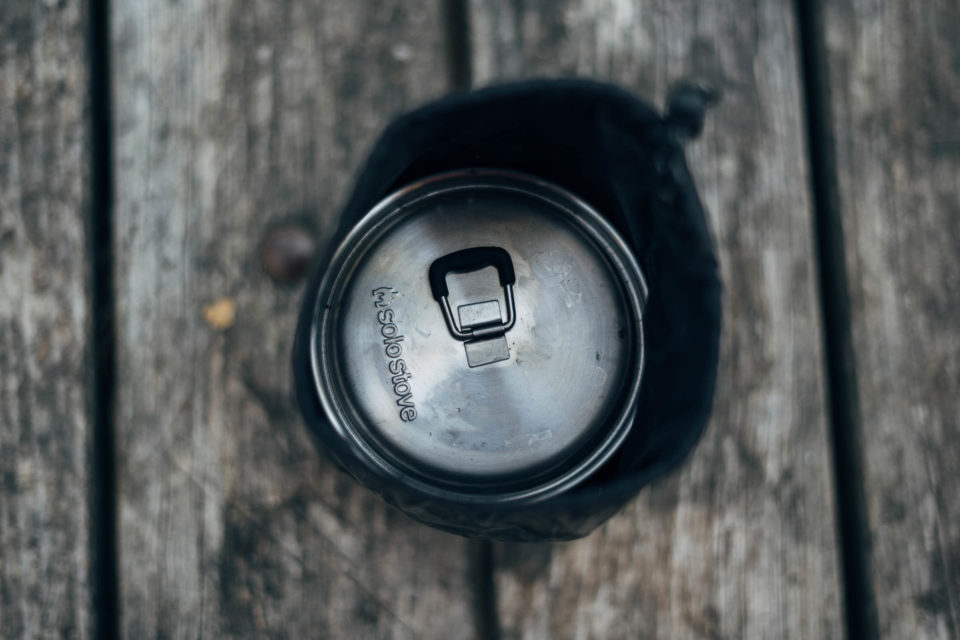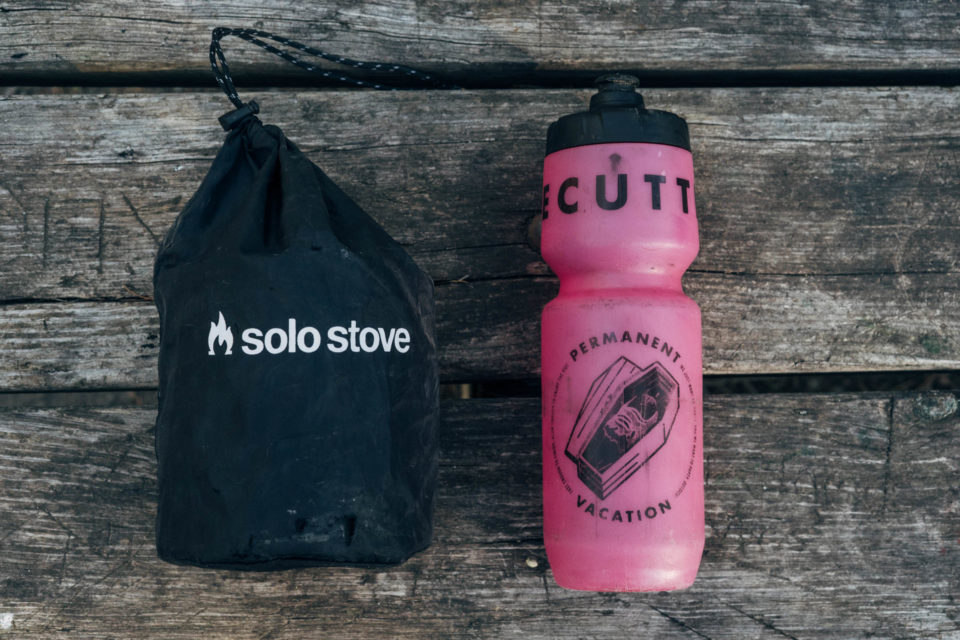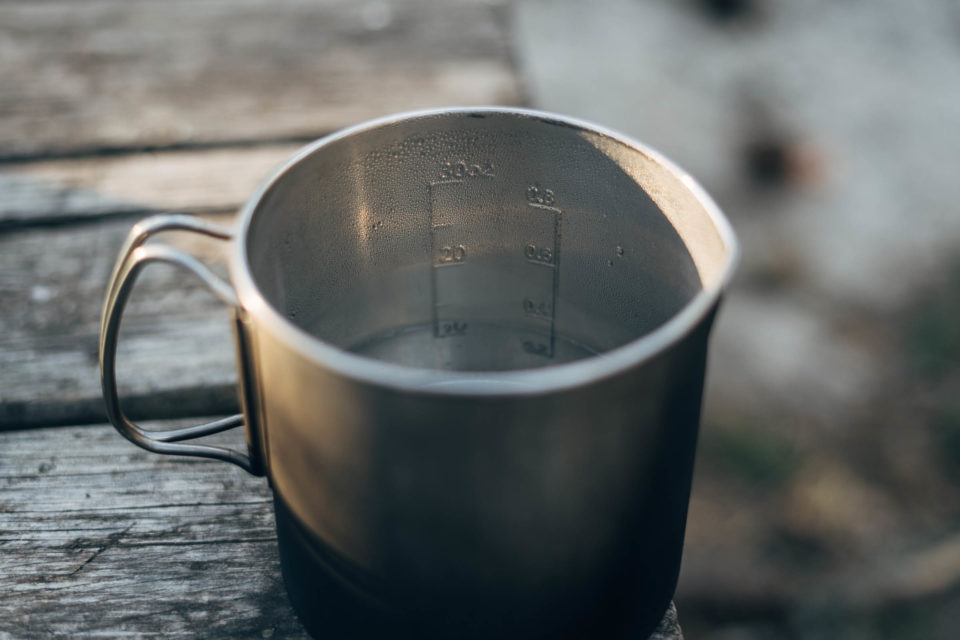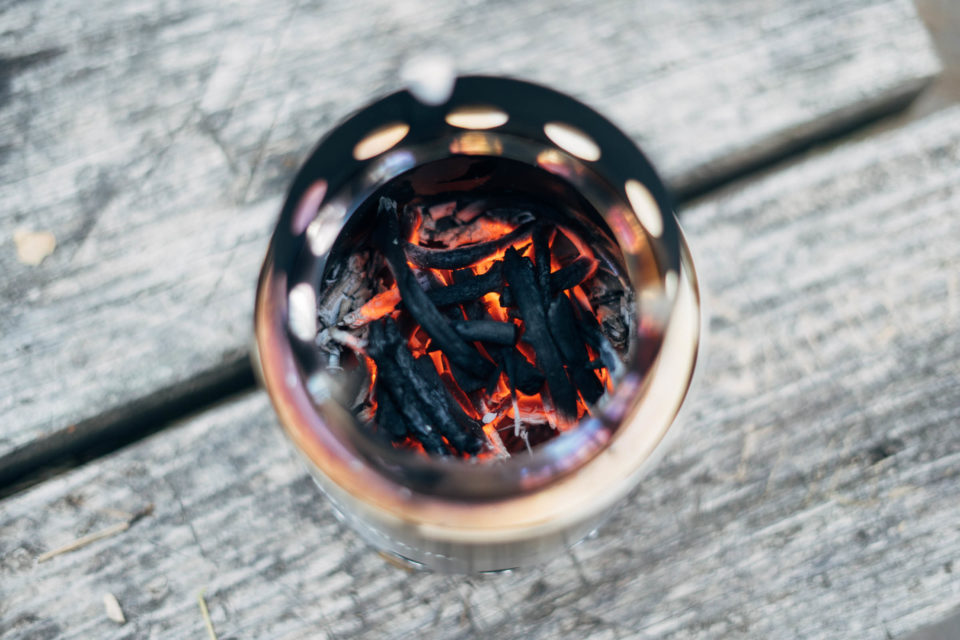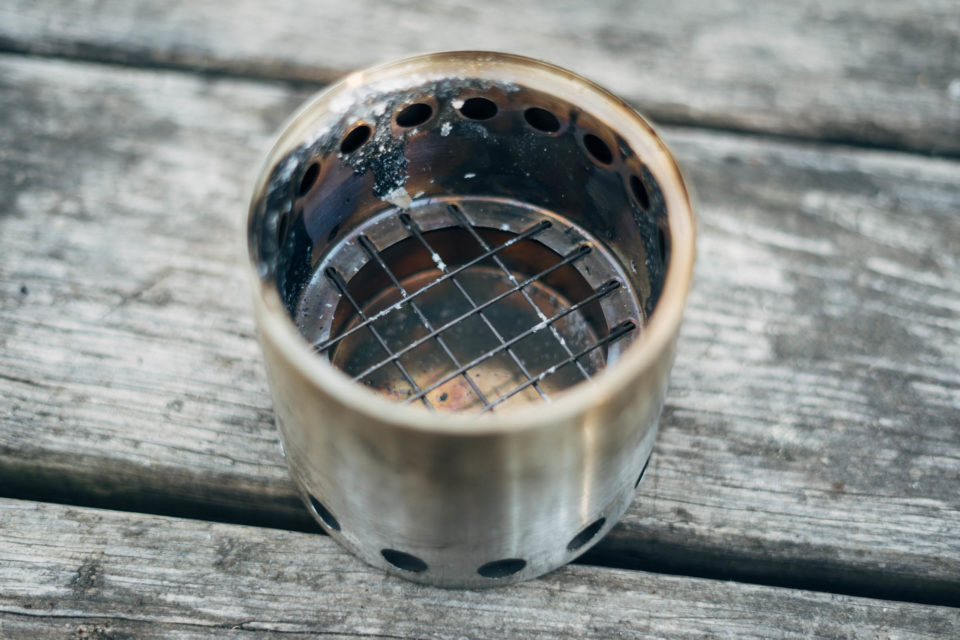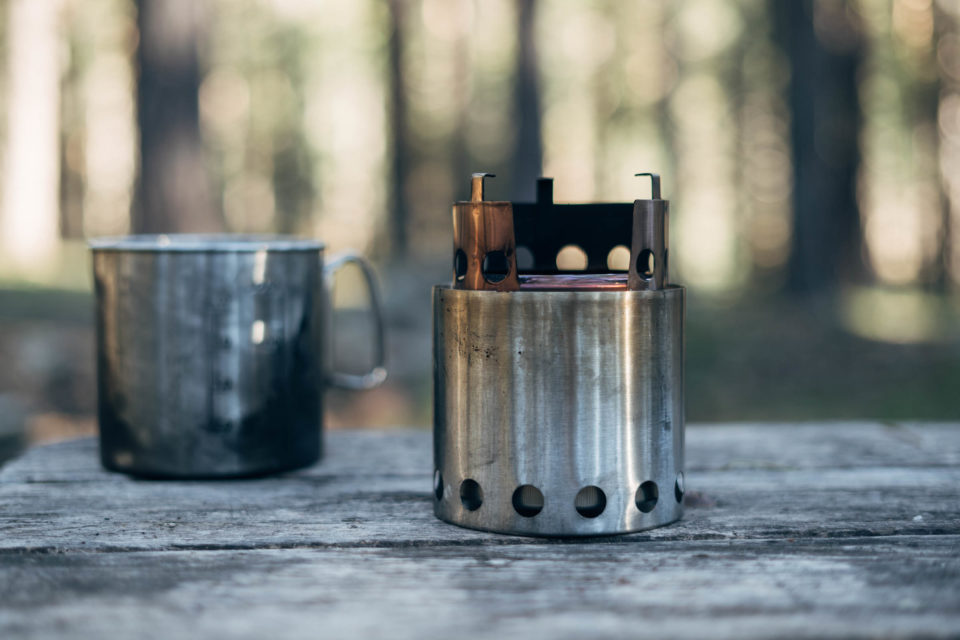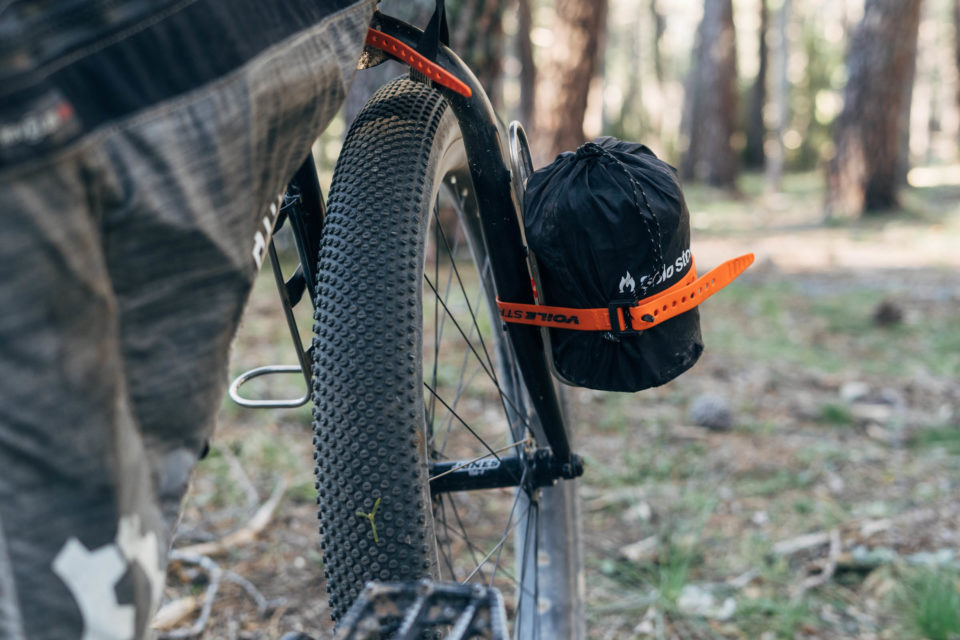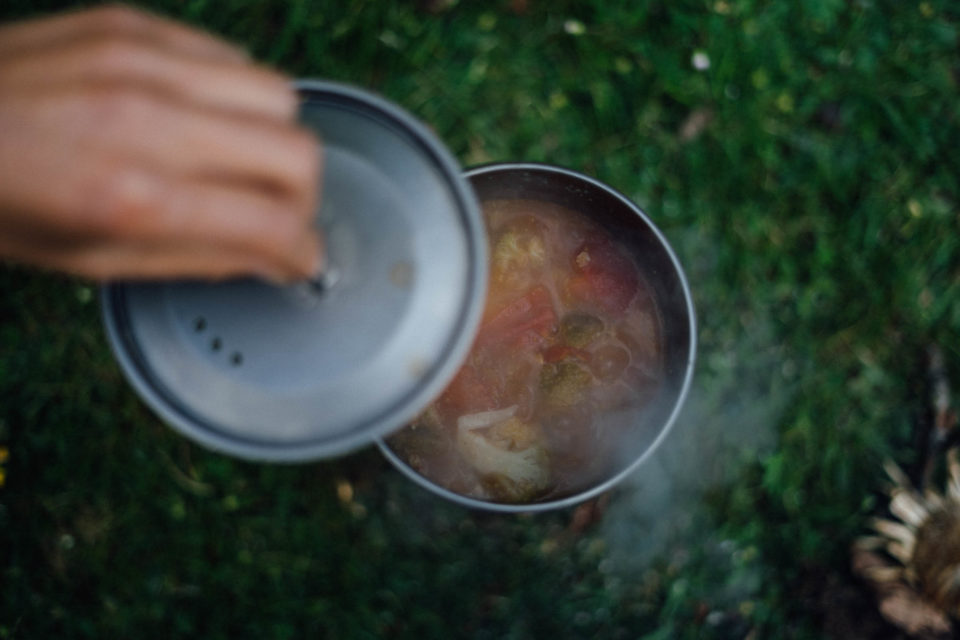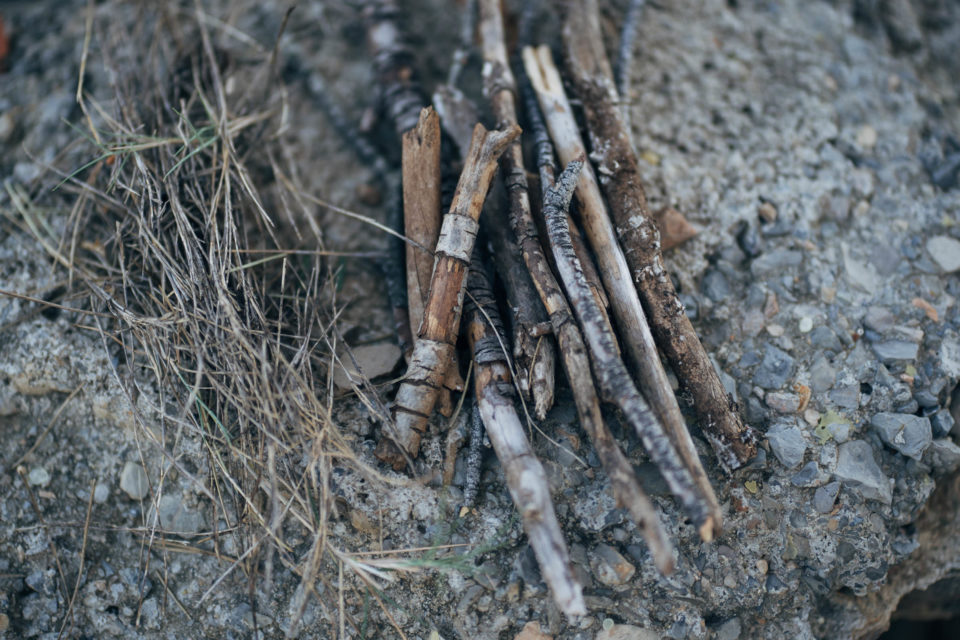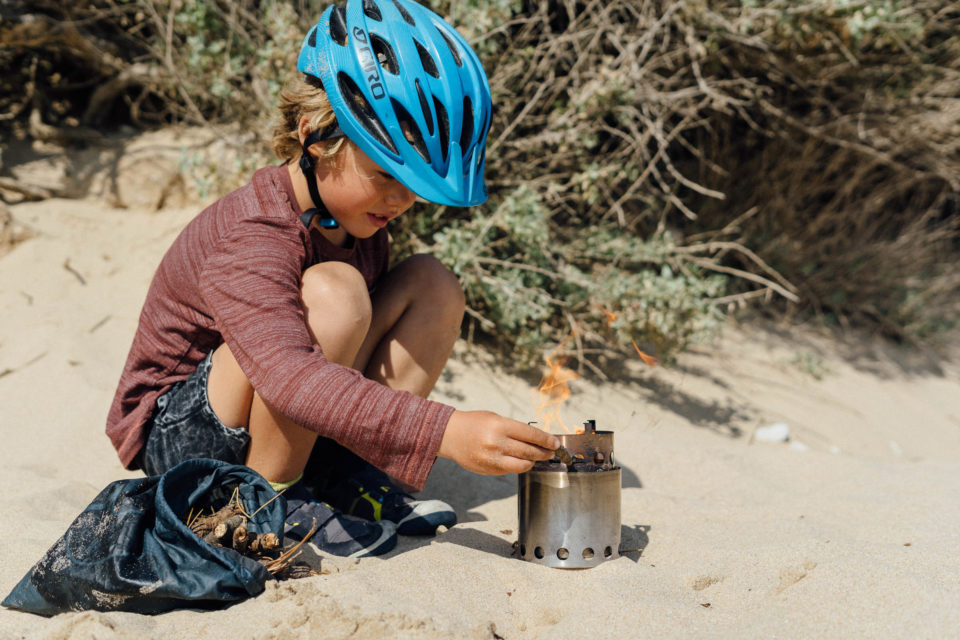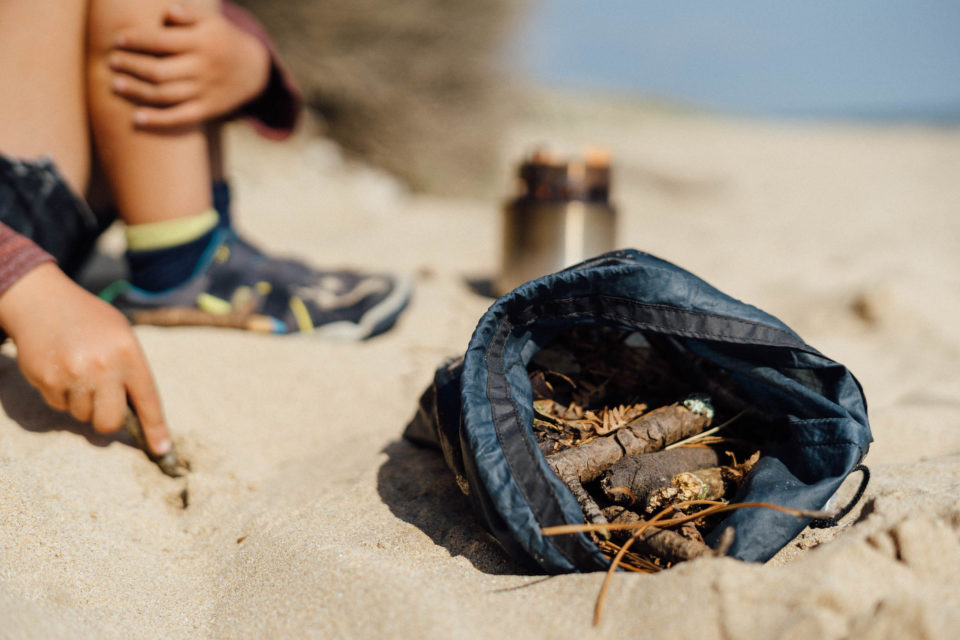Solo Stove Lite Review: twig powered cooking
Cass tries his hand at cooking with the Solo Stove Lite, an ultralight cooking system that uses twigs, leaves, and other forms of biomass to generate heat. Read on to find out how it fares in both perfectly dry Spanish conditions, and less than ideal UK drizzle…
For the longest time, I used an MSR Whisperlite, tolerating its roar, fiddliness, often temperamental nature, and pungent smell because I could use it anywhere in the world. Then I made a shift to cooking with a slower, quieter denatured alcohol (aka ethanol, methylated spirits) based system – like the Trangia/Clikstand and various homemade devices – after realising that suitable alcohol is also widely available, much easier to carry, and more relaxing to use. Once I made the break, I’ve never found a reason to go back, at least for 99 per cent of the bikepacking I enjoy.
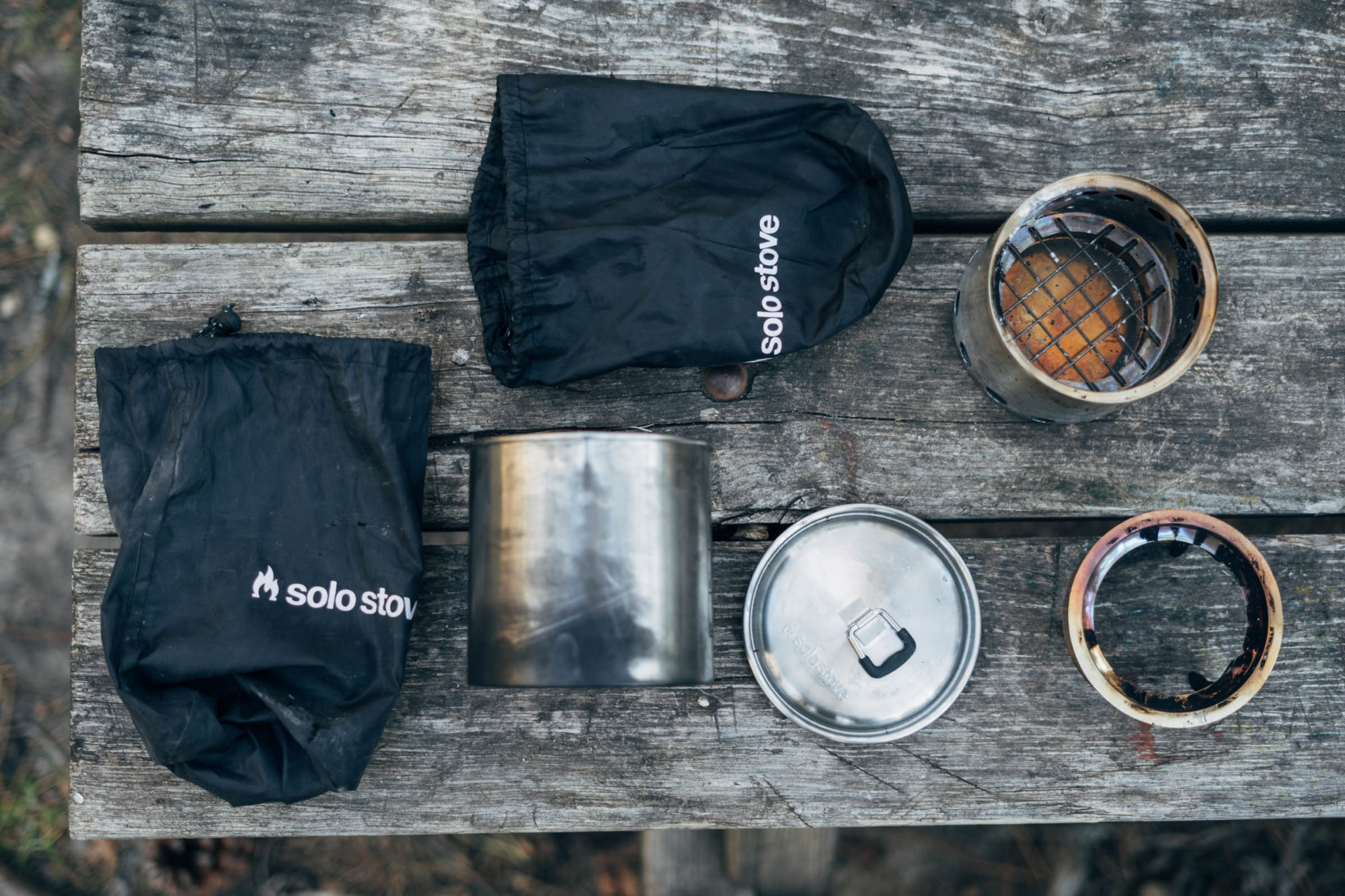
Cooking with a biomass-burning stove is a further step in the same direction, in that the complete process is slower still. In terms of perceived convenience, it’s pretty much the diametric opposite of a ‘plug-and-play’ gas canister stove, because you need to forage around for your own fuel source. Like anything though, it comes with advantages too. Broadly speaking, it’s considered a far more sustainable cooking system, certainly compared to both either gasoline or gas canister stoves; the latter also needs to be disposed of correctly in order to be recycled. It doesn’t scorch the earth and damage root systems in the way that an open fire does. And, you don’t need to worry about carrying around any fuel with you – in theory at least – collecting it as you go.
The stove itself is made from stainless steel and feels robust – there’s a lifetime guarantee as well. At 255g, it’s relatively light in the hand, even if it’s a few times the weight of a typical canister stove – like MSR’s popular Pocket Rocket. There’s a 900ml stainless steel pot (220g) available separately or as a set – which is how I tried it – that’s sized to nest the stove within. The pot itself is well made too, with a tight seal that keeps it firmly closed when not in use. It is, however, somewhat heavy – in the ultralight pot world at least – so I later moved over to a comparably priced Alpkit Mypot 900 (91g, £30). As it transpires, the Mypot 900, whilst having the exact same width, is just a touch too short, so it can’t quite close during transportation. Anyway, the Solo Stove Lite itself comes with a cooking ring, which supports the pot, acts as a windshield, and nests inside when not in use. There are two drawstring bags – one for the stove and one for the pot. The stove feels very solidly made so I’ve been happy to store it with a Voile strap on a cargo cage on my fork, or stashed inside my framebag, where it’s better protected when trail riding.

Unlike a flat-packing wood burner (like a Vargo Hexagon), the Solo Stove has a chamber, with a series of intake holes at the bottom that allow air to be drawn into the burning fuel. According to the description, “While air is being pulled in, the double-wall construction allows air to be heated up and fed through the top vents providing an extra boost of pre-heated oxygen, creating a secondary combustion.” This serves to create a more efficient system, pumping out more heat and less smoke – though you can still expect soot on your pot when you’re all said and done. The twigs sit on a mesh Nichrome floor, turning to hot embers, whilst the spent ash is caught in a pan below; this means the stove’s base never gets hot enough to scorch the earth below. When cooking on damp grass, I noticed the based of the stove dried it out but never damaged it.
Although the weight is greater, one big advantage is that there’s no need to carry fuel – and depending on where you’re headed, you’ll never run out. A thru-hiker would likely scoop up suitable twigs and kindling whilst walking towards the end of the day. Similarly, I found it useful to have a small bag to hand, so I could prep some fuel on the occasions I planned on camping outside a forest, or had some on hand for a coffee (avoiding the pitfalls of morning due). The act of collecting it becomes a pleasant experience and a chance to explore and appreciate your surroundings – better than going to a gas station or hunting around the aisles of a supermarket for denatured alcohol!
So how well well does it actually work? When conditions are optimal, the Solo Stove is extremely straightforward and almost on par with my Trangia/Clikstand, speedwise. I couldn’t help but chuckle with pleasure and excitement when using it. I didn’t measure boiling times, but they were certainly quick enough not to frustrate me, to the point that I missed not being able to simmer on occasions.
Introduce damp climes, however, and the life of a camp chef isn’t quite so straightforward. Invariably, I still succeeded in finishing the evening with a nice hot meal. But initially, it was sometimes a battle, and one that I even lost once on a damp and drizzly Quantock Hill overnighter, despite my best efforts (I’d add that I’m no expert fire builder, at the best of times). Still, lesson learned. Since then, I’ve improved my technique and made my own firestarters, using cotton wool and vaseline, or carried a small bottle of denatured alcohol to help get things going if needed, or an Esbit fuel tablet as a backup. To be fair, the system is also designed to support a Trangia-style burner, which Solo Stove sell as part of an accessory kit, along with a windscreen, Tinder-On-A-Rope (a resin that burns long and hot), and Swedish FireSteel. I’d certainly arm myself with these accessories, or their equivalents, for regular use.
Quantocks blip aside, I’ve been mostly successful at requiring only the biomass I’ve found to hand throughout a summer of bikepacking the UK, France, and Spain. For the most part, my MO has involved collecting a pile of leaves, dry grasses, pine needles, and even dry cowpats to get things going, then moving onto thin twigs, followed by slightly larger ones. Note that softwoods burn quicker than harder woods (like birch, maple, hickory, and oak), so you’ll have to keep satiating it regularly if that’s what you have around. It does mean you have to be stove patrol most of the time – you can’t really wander around, seeing to other camp duties.
In terms of impact, using it to cook a meal creates only a small amount of ash, which is easily dispersed or covered up, effectively leaving no trace whatsoever. Then, there’s the material waste saving from a plastic bottle of denatured alcohol, or a gas canister. I won’t get into the topic of burning biomass and how carbon neutral it may or may not be, but it’s certainly a lot friendlier to the earth than extracting oil and storing it in a gas station…
Getting it going aside, I did find it an easy system to use after the initial learning curve, for both ‘real’ cooking and heating up dehydrated food. The pot’s wide enough to handle vegetables, though I had to be careful not to scald myself on its handles, which have a tendency to heat up quickly. Using a rag as a gripper did the job, also helping prevent anything from rattling around during transit too. In really windy conditions, it would benefit from a proper, fully enclosing windscreen; Solo Stove offers one made from aluminium, which folds flat. As for capacity, the Solo Stove Lite and a 900ml pot are recommended for 1-2 people – I’d say this translate into feeding one hungry bikepacker, but it also worked well for me and my 6 year old son. There’s a larger Titan model, which caters for 2-4, and a variety of other models and kits on offer, depending on which accessories you need.
Do be sure to check up on any local restrictions – during dry seasons, cooking with an open flame is often banned in forests. Clearing the area of surrounding biomass, or cooking on a rock or stone, is good protocol. Note too that the collection of any biomass in some desert environments isn’t recommended, as it provides a refuge for animals.
Pros
- No need to carry fuel
- More eco friendly than a gas canister or gasoline
- Very solidly made
- Leaves no trace and doesn’t damage root systems
- Relatively speedy with some practise and good conditions
- Teaches you new skills; the art of finding dry biomass and starting fires
- Soul satisfying in preparation and execution; by way of contrast, a Multi Fuel System kills any tranquil atmosphere!
Cons
- Heavier than other ultralight cooking systems (though there are savings on fuel)
- Requires a fire starter for damp campouts
- Can leave pots sooty
- Takes practise to get the best from it
- Benefits from a Trangia-style burner as a backup for longer trips
- Slower than a gas canister stove
- Can only be used in areas without fire restrictions
- MODEL NAME: Solo Stove Lite
- WEIGHT of STOVE: 255g (stove only)
- PRICE: $90/£75 (currently $70 at REI)
- Place of Manufacture: China
- Manufacturer’s details: SoloStove.com
WRAP UP
The Solo Stove Lite – or perhaps any other biomass-burning stove, for that matter – isn’t the system I’d pick for a quick brew in the morning, or any situation where I need to fuel myself in a hurry to cover ground quickly. But I never race, so these are rarely important criteria for my bikepacking trips.
I’ve also found there’s a relatively fine line for when I’ve had the most success using it: not too wet (or I struggle to get it going) and not too dry (or I worry that I shouldn’t be cooking with an open flame). This means it’s definitely a stove that’s more relevant to some parts of the world than others, and you’ll want to make some contingency plans too, in terms of carrying a pre-prepared fire starter. There’s definitely a learning curve to getting the most from it.
I do, however, love the idea of setting off from home without needing to carry purchased fuel, using instead more sustainable biomass that’s all around. And, I really enjoyed the whole process of cooking with the Solo Stove, as did my 6-year-old son! We loved collecting pinecones, leaves, and twigs, then feeding the stove as we cooked, before enjoying the glow of the embers, as we watched it burn out again. Camping is as part of bikepacking to me as the riding itself, and cooking with a biomass-based stove definitely elevated the experience.
But as romantic as it all may sound, reliability is an important factor when we bikepack, because nothing is more frustrating than struggling to get a hot meal inside you after a long day in the saddle. The Solo Stove, at its purest, can’t claim to be as dependable as cooking with a prepared fuel source, simply because you need access to suitable biomass and manage it whilst cooking. My technique certainly improved over time, but it’s far from infallible, as I found out.
So whilst I’d definitely recommend the Solo Stove Lite, as it’s very solidly made and it works exactly as intended, for longer trips I’d advise backing it up with a Trangia-style burner (which you can make yourself or buy from Solo Stove). I think this offers the best of both worlds and provides a more effective, rounded system, whatever the weather, and wherever you find yourself on your travels.
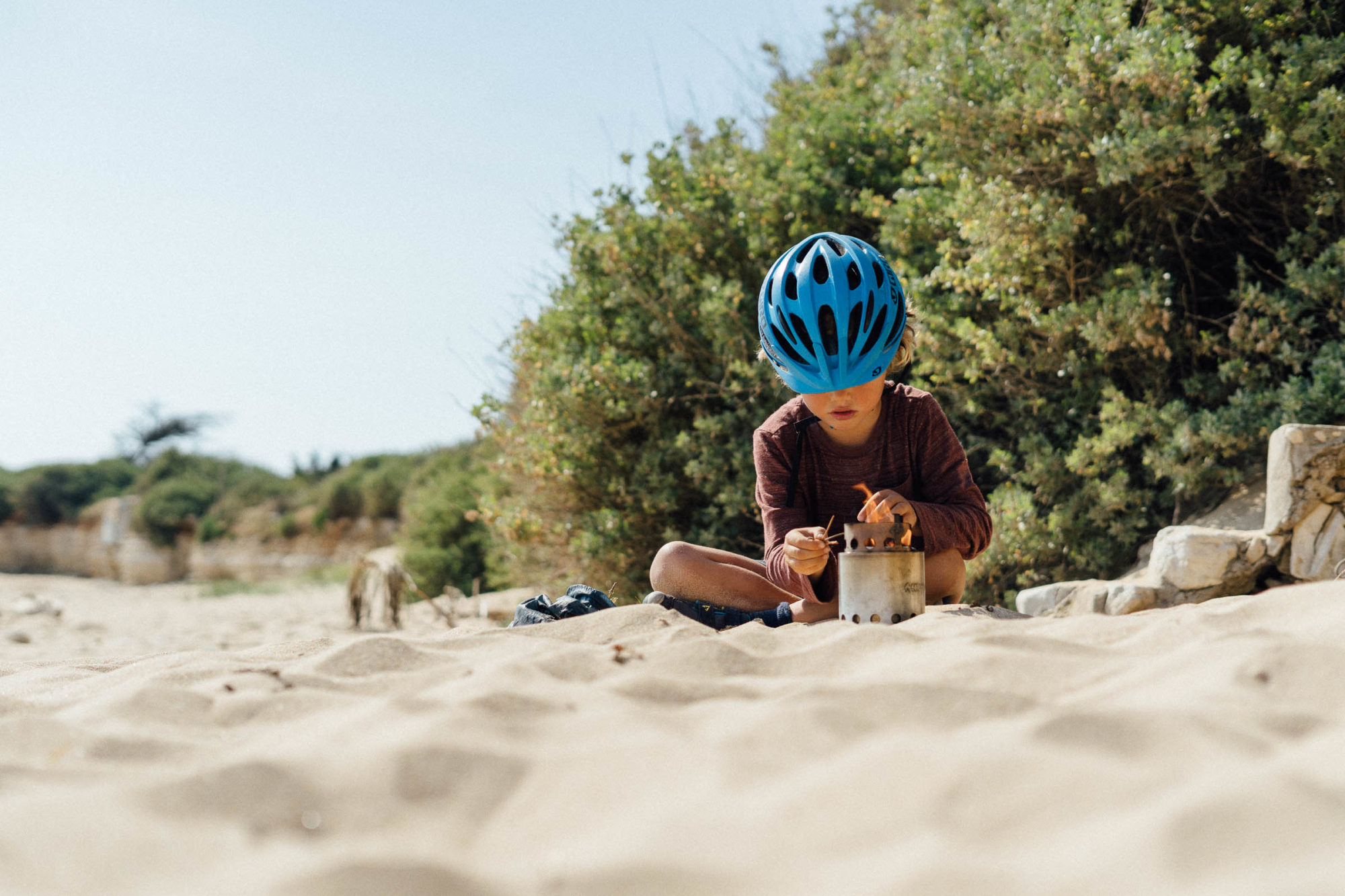
Have you tried the Solo Stove or other biomass burning stoves? Let us know how you got on in the comments below!
Please keep the conversation civil, constructive, and inclusive, or your comment will be removed.






